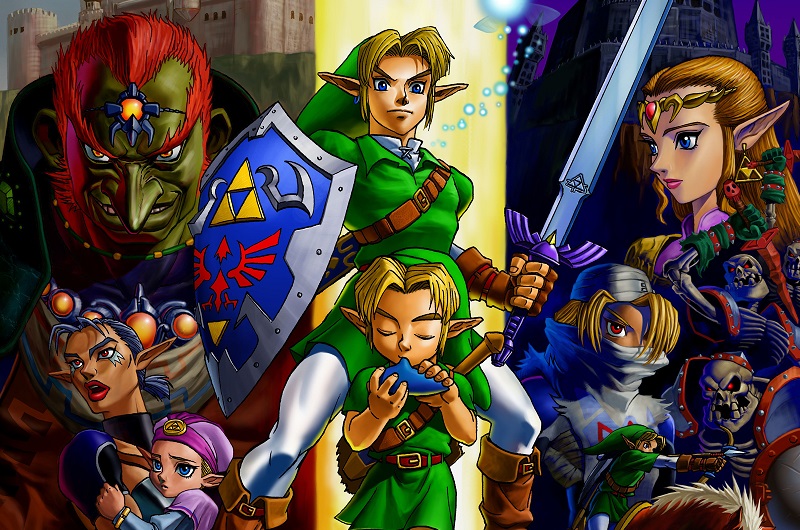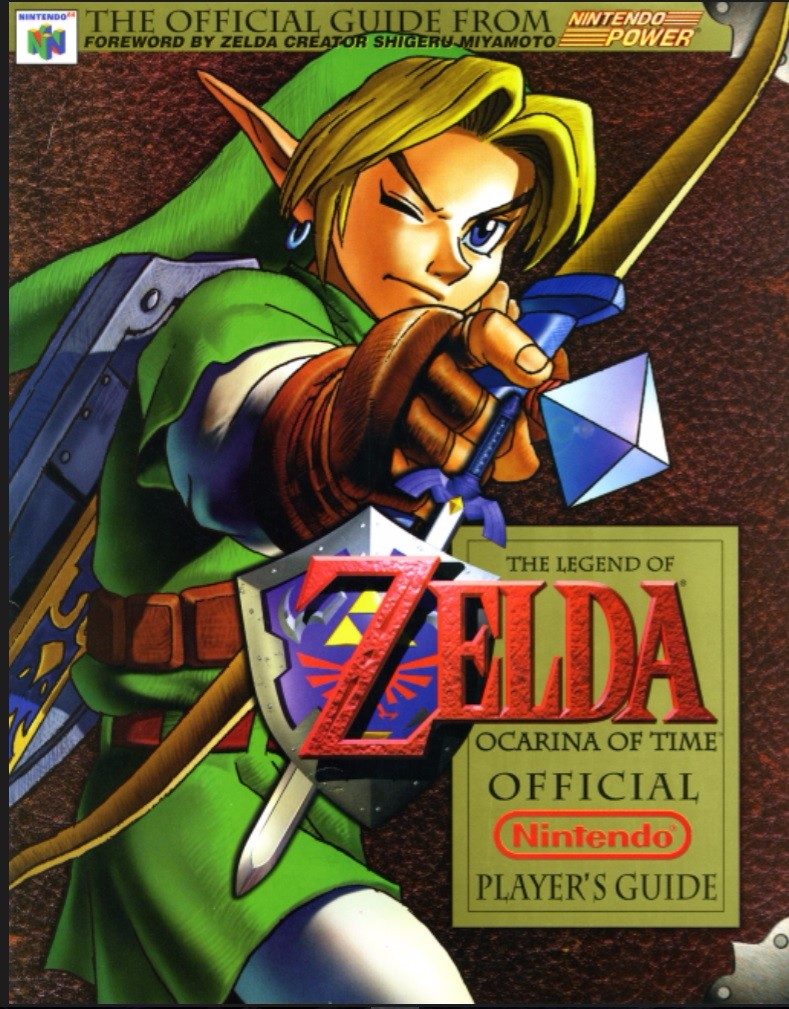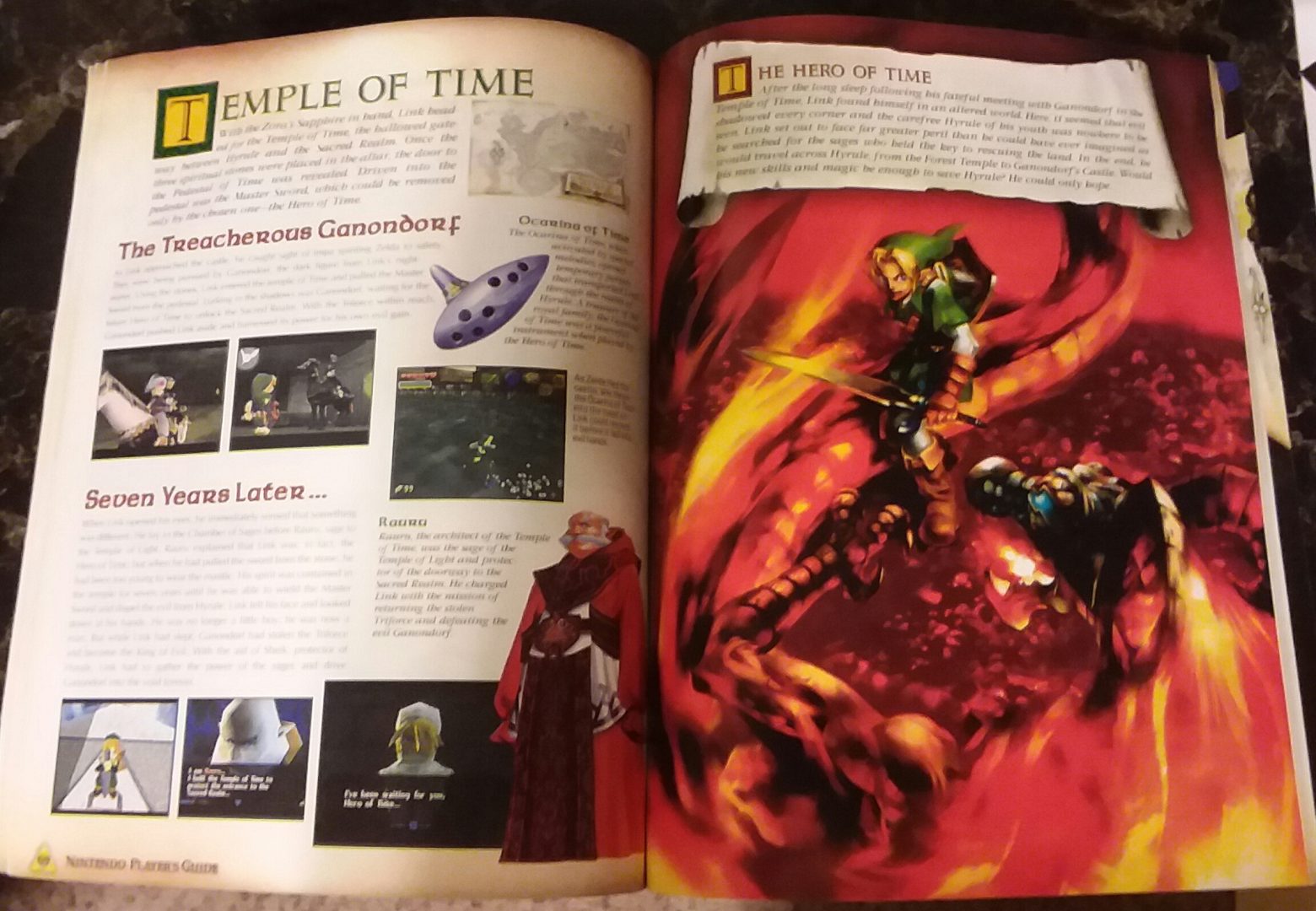Why I Love the Nintendo Power Player’s Guide of Ocarina of Time
Posted on November 22 2018 by Michaela El-Ters

This article was originally published on October 2nd, 2017. We have decided to re-share it as part of Ocarina of Time Week.
The Nintendo Power Player’s Guide of Ocarina of Time holds a special place in my heart. Ocarina of Time was a game that I played a lot on my brother’s Nintendo 64, and it’s arguably the game I played the most often growing up. I loved exploring the open world, talking with the NPCs, and immersing myself in the story of a child’s destiny to become the world’s savior. I became so obsessed with the game that I collected any merchandise that I could get my hands on, ultimately leading to me reading and admiring this edition of the Player’s Guide. This guide is particularly special for two reasons:
1) It features a forward by the series creator, Shigeru Miyamoto.
2) The guide’s unconventional writing style makes for a fun and dynamic reading experience.
 The first reason is pretty straightforward, and I’ll get to it later, but it’s the second one that I really want to address. The writing style used in this guide is unlike any other I have ever read. To give you a sense of what I mean, here is an excerpt:
The first reason is pretty straightforward, and I’ll get to it later, but it’s the second one that I really want to address. The writing style used in this guide is unlike any other I have ever read. To give you a sense of what I mean, here is an excerpt:
“Link left the marketplace and headed to the castle as the great Deku Tree had instructed him. Unfortunately, because of a foolish prank pulled by some townsfolk, security around the castle had been increased tenfold. A legion of guards stood between Link and Princess Zelda. Craftily, Link observed that the guards were looking only for outsiders coming up the path. A boy climbing up the wall and cautiously walking from tree to tree behind the guards would not be discovered. Once finding his way around the gate, Link softly tread across an open field. But with the drawbridge closed and the walls too high to scale, Link dove into the chilly moat and swam past the final pair of guards.”
-Nintendo Power Player’s Guide of Ocarina of Time, page 36
See what I mean? The guide is written in third person perspective, telling a story. It’s not, “You need to go here and do this,” but rather, “Link knew he had to move the statue here in order to open the door,” and so on. Sometimes, it even suggests that this chapter in the history of Hyrule has recently been unearthed by historians and is revealed for the first time through this book. I love this meta, self-aware quality of the guide.
The writing style is purposefully story and character driven, intended to invoke an emotion with the player rather than just give them stale directions. It’s no longer just a navigation tool, and the fact that it’s so creatively written adds a new level of immersion that is so incredible. As a result, Nintendo Power Player’s Guide of Ocarina of Time instilled both my passion for reading and drawing when I was young. The gorgeous artwork sprinkled throughout the pages made me connect with the story and characters even more, and the writing style was so captivating and fun to read.

Now, back to the forward I mentioned before. Shigeru Miyamoto thanks the fans for playing the games prior to Ocarina of Time before writing that this version of the guide was created with a specific goal in mind, and asserts the following:
“With this book, you will discover the secrets of every nook and cranny of the Land of Hyrule as if you were one of the Hylians.”
-Nintendo Power Player’s Guide of Ocarina of Time, page 1
Reading this as a kid, I don’t think I understood the meaning behind that important phrase, but reflecting on it now, it makes a lot of sense. The guide is meant to accompany the video game to create a holistic, memorable experience for the player and truly bring them into the story. It’s not just about playing the game and finding all of treasure and secrets. It encourages the player to think back on the game as a piece of art with excellent storytelling and revolutionary graphics long after the controller has been put down. Shigeru Miyamoto’s forward reinforces this idea that the video game transcends beyond a simple means for entertainment, and it really showcases the love that he and the rest of the Zelda team pours into the series.
 But it doesn’t stop there. The guide also has a lot of extra content besides the main story and character descriptors, including plot summaries of earlier Zelda games (also written in third person), information on key items in the series’ lore, entire pages devoted to a single piece of art, a fold out map, and blank staffs where the notes for each ocarina song can be notated for reference. Needless to say, not a single page is wasted, and I read through the guide so many times growing up that it became very worn down. Some of the pages got torn and crinkled at the edges while other pages were nearly falling out of it. I had to be really careful handling the guide, and eventually I had to put it in storage to prevent any further damage.
But it doesn’t stop there. The guide also has a lot of extra content besides the main story and character descriptors, including plot summaries of earlier Zelda games (also written in third person), information on key items in the series’ lore, entire pages devoted to a single piece of art, a fold out map, and blank staffs where the notes for each ocarina song can be notated for reference. Needless to say, not a single page is wasted, and I read through the guide so many times growing up that it became very worn down. Some of the pages got torn and crinkled at the edges while other pages were nearly falling out of it. I had to be really careful handling the guide, and eventually I had to put it in storage to prevent any further damage.
A couple of years ago, I received a new copy of the guide as a gift from my brother, and I don’t know if I managed to express just how much that meant to me. This guide was a major part of my childhood, something that inspired me in a lot of ways that I hadn’t experienced before. Subsequent publications of Zelda guides have deviated from this writing style, and part of me is disappointed to see that this creative and original way of writing was discontinued. Despite that, I love this guide so much, and while I don’t know if I’ll ever come across any others like it, I’m content with that. The Nintendo Power Player’s Guide of Ocarina of Time means the world to me, and I wouldn’t have it any other way.
Michaela El-Ters is an Original Content Editor at Zelda Informer. For more of her video game gushing, check out her blog.

Michaela El-Ters is a Senior Editor for Zelda Dungeon. She is also an Senior Writer for Boss Rush Network, and writes blogs and streams games on Objection Network. Her favorite Zelda game changes with the seasons, but the series as a whole is near and dear to her heart.



